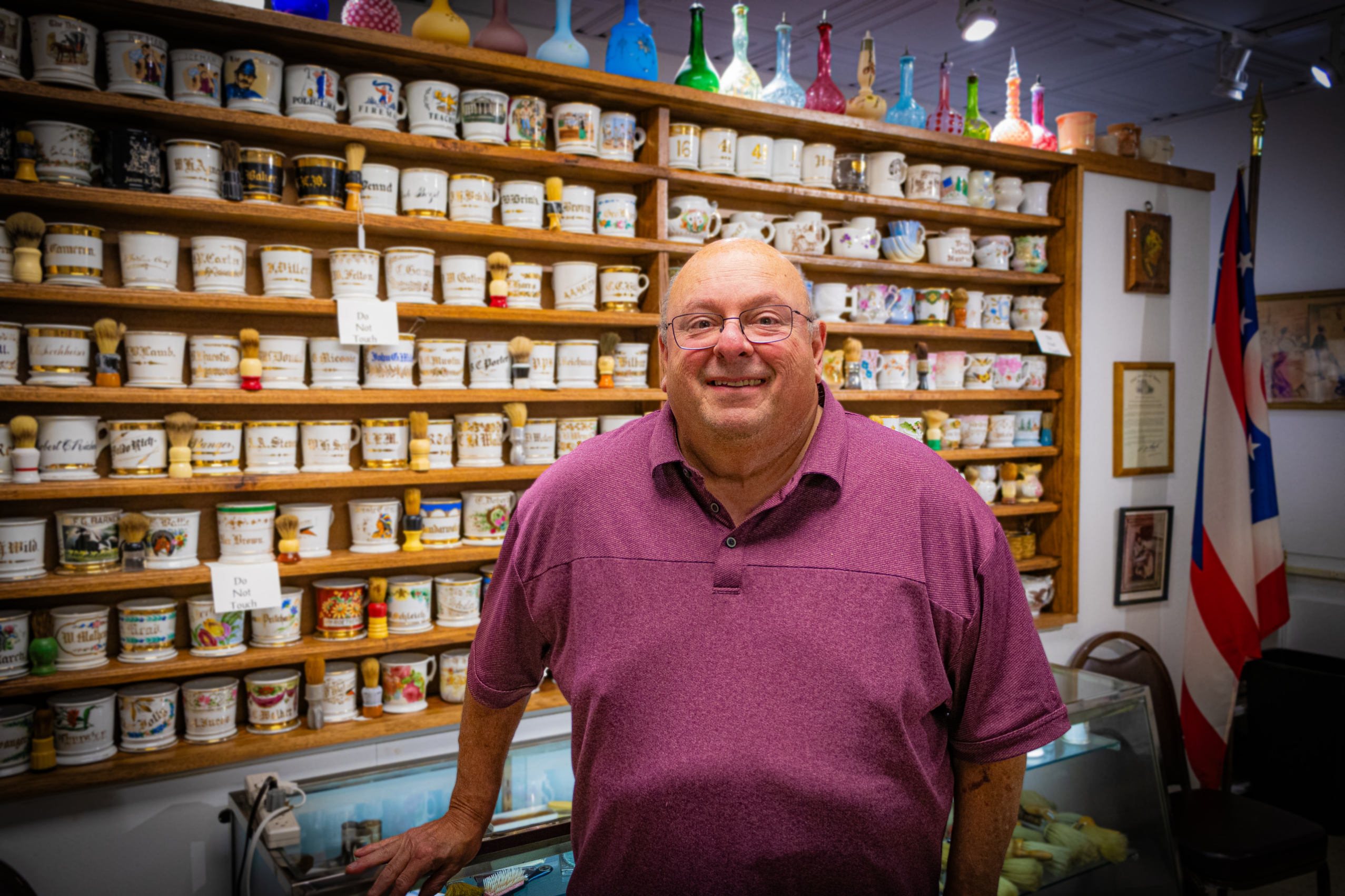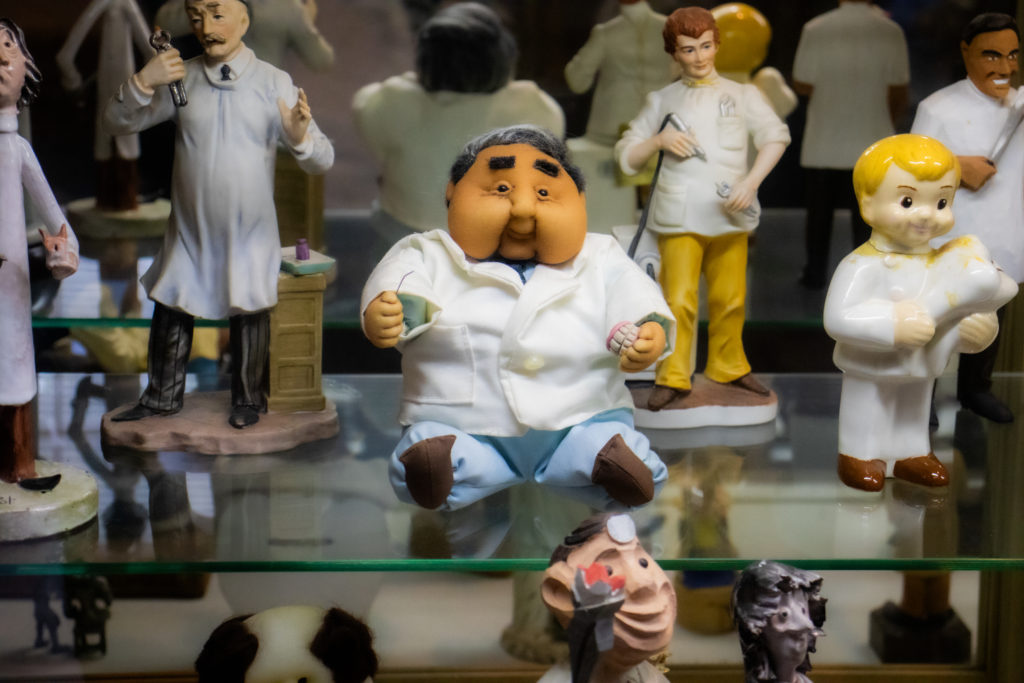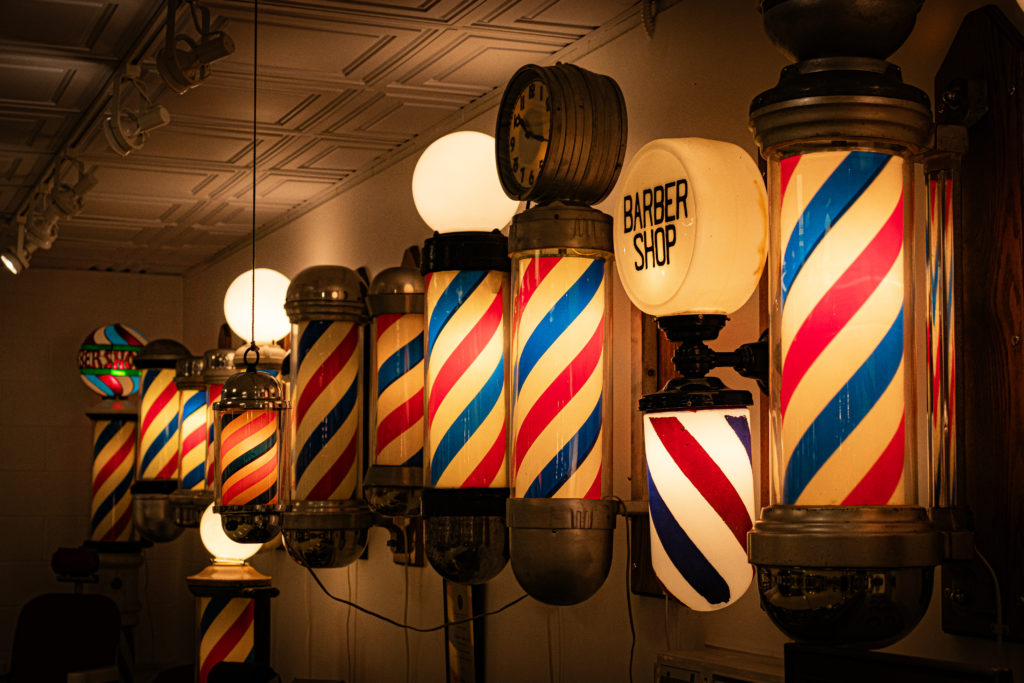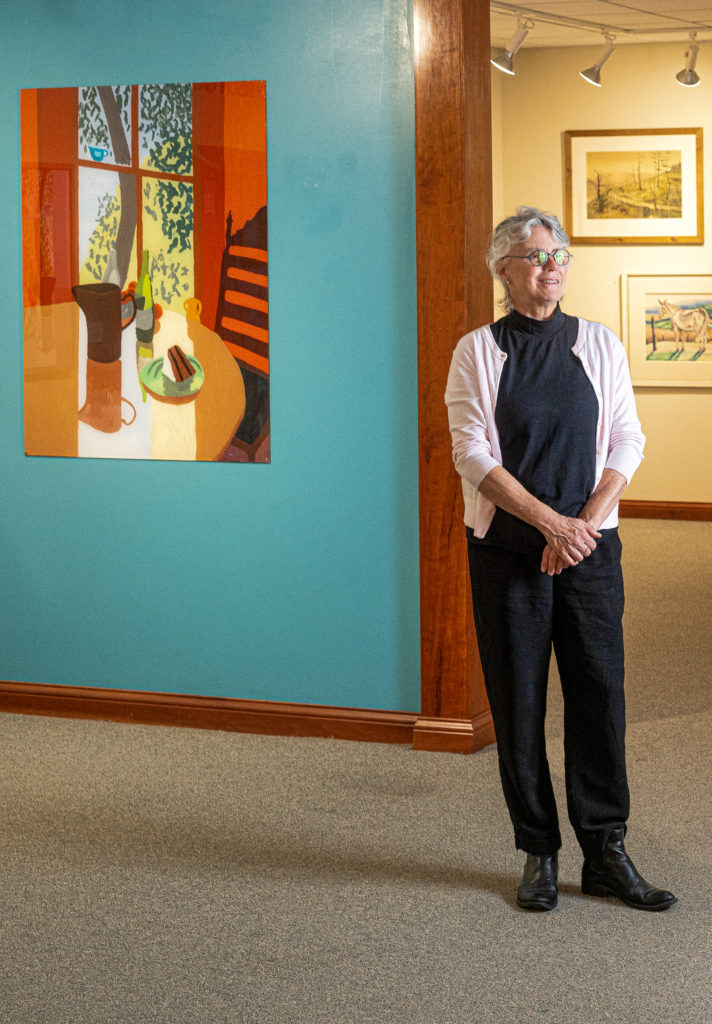
By Ethan Bloomfield, Photos by Danielle Smith and Milton Lindsay
Stepping up to the second floor of the Southern Ohio Museum and Cultural Center, I’m faced with an immense oil painting of a table set for eight. The plainly dressed family, solemn with their heads bowed, sit before empty plates ready for cool milk, fresh vegetables and roast chicken. The edge of the scene trails off into the rolling green hills of Appalachia that surround the museum.
Throughout the foothills of Appalachia, everywhere from the main streets to the backwoods, histories and collections are waiting to be found. The Ohio Museums Association lists over 1,200 members in its catalog, “from arboretums to … zoos—and everything in between,” their website reads.
My journey promised to be one of discoveries, as I ventured into the corners of southeast Ohio’s cultural archives.
A Lonely House: The Dr. John Harris Dental Museum

On West Main Street in Bainbridge, the Dr. John Harris Dental Museum sits nestled in a greenery-laden row of unassuming houses. A sign pointing to parking in the back and a little hanging nameplate are all that announce the museum to the street.
The small, white house is that of Dr. John Harris, a New York native who moved to Bainbridge around 1825 to practice medicine and dentistry. In November 1827, Harris told local newspapers he intended to take on medical students. His first recruiting effort was successful, and his home became the first dental school in the United States.
The Ohio Dental Association bought the house in 1938 and converted it into a museum, which opened in 1968.
Through the side door entrance sits a small elderly woman with a dyed bob haircut reading a thick paperback, who collects the $5 admission fee. Betsy Harr, employed by the museum for over 10 years, is the only other person I see as I take my tour.
“Generally, we get people who are going someplace else,” Harr says. “I usually ask people why [they come in], and it’s usually dentists going away camping.”
The ledger behind her desk features names from near and far over the last few years, with the number of visitors sometimes dwindling down to handfuls over weeks.
Down the hall near the medical students’ living quarters, two plaques hang commemorating donations from doctors and dentists to the institution.
“We’re funded through the state … I mean, we don’t make that much,” Harr says. After the coronavirus pandemic, the museum shifted from opening six days a week to just two.
The house yields all its secrets in little more than an hour. In one room, a row of dental chairs from decades and centuries past, and in another, glass cases full of medals and accolades for the most distinguished Ohio dentists. The tools and procedures on display were enough to make me count my lucky stars for modern medicine.
After a lengthy farewell from Harr, Bainbridge comes back into focus. The stillness and loneliness of the hallways of the dim museum are behind me, but the feeling pervades long after I leave town.
For the Glory of Haircuts: The National Barber Museum and Hall of Fame

Curator and director, Mike Ippoliti, hails from across the corridor as I walk into the National Barber Museum in Canal Winchester. With a wave, the large, bald man shows me into the nearest room, outfitted with a one-to-one diorama of a barber shop from the 1860s.
As we sit down at a white, plastic table together, my eyes wander behind him to the wall of hundreds of shaving mugs with names, colors and shapes of all kinds. Ippoliti says I haven’t seen the half of it yet.
Ed Jeffers, a native of Canal Winchester became known as the “godfather of barbering” for his contributions to the profession, started the museum above his shop in 1988 to show off his personal collection. Since Jeffers passed away in 2006, the collection has belonged to the Canal Winchester Historical Society, with Ippoliti as its curator.
After a fire damaged the museum’s original downtown location in 2014, it reopened in a new home on May 5, 2018.
The over-10,000 pieces, housed in an administrative building for the nearby Canal Winchester Local Schools, range from antique chairs to vacuum tube hair stimulators.
“[People] will walk in here, not really thinking it’s going to be much,” Ippoliti says. “They thought they were going to see a chair with some razors, some shaving mugs … well, there’s more to it.”
Ippoliti takes me through each room, describing their contents in joyous detail. A room dedicated to “whimsical” barbering memorabilia, a room with walls full of wooden and electric historical barber poles, and a full-scale model of a barbering station at Ed Jeffers’ old shop are just some of what I see on the hour-long tour.
Tucked away in the opposite corner sits a small glass case with a magazine in a language I could not read. The display features Adam Szulc, a Polish barber and the 2021 hall of fame inductee. Signed books and custom razors sit among pictures of a happy, well-bearded, greying man.
Many of the barbers on the wall have cases, frames or gifts somewhere in the room, dedicated to their commitment to the museum. As Ippoliti recounts the stories of the items, he laughs as if sharing memories of dear friends.
The grand finale is the titular hall of fame – columns of names and headshots of dozens of accomplished barbers hanging outside Ippoliti’s office. The display features personages such as Vernon Winfrey, Oprah Winfrey’s father; Russell Hiatt, the inspiration for “Floyd the Barber” of Andy Griffith Show fame; and Ippoliti himself, who was inducted in 2022.
“They just surprised me with it,” says Ippoliti, fondly, looking at the photo on the wall.
After one more pass through the main corridor, I leave with a newfound appreciation for the art of barbering—and, thankfully, with my hair still down to my shoulders.
A River Town’s Pride: Southern Ohio Museum and Cultural Center

My first sight as I walk inside is an oil painting tucked around the corner, a stoic clown peers from the frame. A well-worn footpath snakes through the tall grass along the tents into the distance. The afternoon sun casts long shadows on the grazing camels in the middle ground, adorned in colorful, patterned cloth. The aftermath of this circus’ day felt calm, yet melancholy.
Peeking out through the side streets on the way downtown, the murals of Portsmouth’s famous floodwall flash with scenes from the last 2,00 years of the region’s history.
Opened in 1979, the Southern Ohio Museum and Cultural Center has been a mark of pride for the city, welcoming locals and visitors to come together, learn and enjoy art free of charge.
Charlotte Gordon, the artistic director at the museum, has advocated to maintain and improve the museum space for the people of Portsmouth.
“My husband and I are co-directors, and a decade ago . . . we were really looking for something to roll up our sleeves and make an impact on a community,” Gordon says. “What attracted us to Portsmouth, and to the Southern Ohio Museum is that this is a cultural center as well.”
The museum boasts a theater space with live events for all ages throughout the year, along with community galleries and exhibitions for local artists.
The stars of the museum are the two galleries on the top floor. The first and most immediately striking display is the single largest collection of works by Portsmouth native and surrealist painter Clarence Holbrook Carter.
Carter detailed the melancholy of own upbringing and experiences through oil painting and scant multimedia. His works hang in the most prestigious museums in America, yet most remain in his hometown.
“Carter is really a feather in Portsmouth’s cap,” says Gordon.
The museum is arguably most known for its collection of prehistoric Native American artifacts. Over 10,000 pieces from across the region are on display, unconnected to any living Native tribe.
Local entrepreneurs Charles and Bill Wertz unearthed the collection from mounds and burial sites in the early 20th century. After their deaths, the family donated the items with the stipulation that they never leave the museum. The brightly-lit glass shelves contain pipes, flutes, arrowheads, sculptures and jewelry, among the sorted and labeled earthworks and artifacts.
“It’s all the story of the human race. Art are communication objects. …, Gordan says. “We can come in and have connections to this work that was made thousands and thousands of years ago, and still, we can have connections with the people from this region who are still creating today.”
I was led through a dark staircase back into the main hall. I glanced at the modest gift shop as I left, adorned with tee shirts and shiny knick-knacks. Back on the sidewalk, I took in the busy corner of Portsmouth that I found myself on; the people on the roads headed to class at Shawnee State, or to work downtown, and I stood with a softened eye for the city I’d been going to my whole life, somehow new and a little more inviting.
